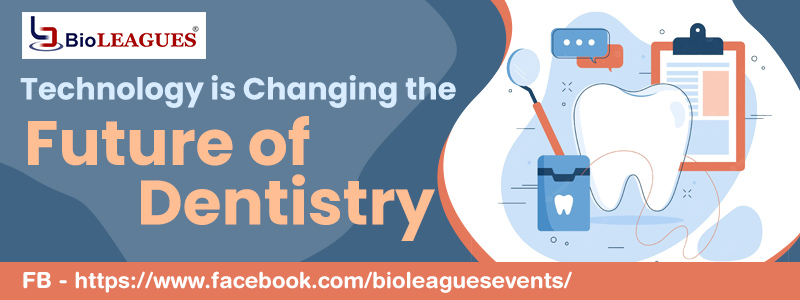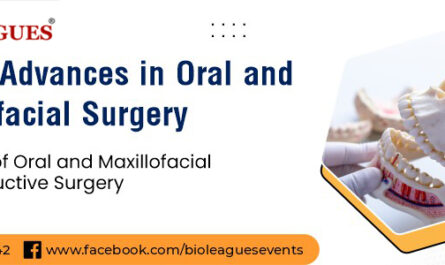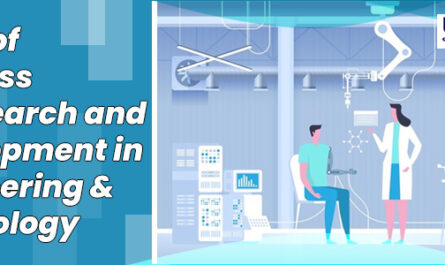Internet of Things (IoT) and Artificial Intelligence (AI) is an important application of computer engineering. It plays an important role in the design and manufacture of intelligent dental products and services. Digital dental technology encompasses any digital or computer technology that a dentist can make use of in order to analyze, diagnose, and manage oral health. Advanced Digital Dental Technology is changing almost all aspects of professional oral care, from that patient’s check-in for their appointment time dental professionals assess their oral health. Some digital dentistry tools that one might come across during their appointments include –
Digital X-Rays
X-rays have been used in dental clinics for quite a while now. While the conventional x-ray process requires the processing of film, which is time-consuming, laborious, and expensive, with prints having to be filed in cabinets and physically delivered to other offices and specialists if necessary, digital radiography has made the production and storage of x-rays much easier. In many dental offices, scanned x-rays (think of a digital camera) are replacing traditional x-rays. Despite the fact that digital x-rays have been on the market for a number of years now, they have only begun to be used widely by dentists. Digital x-rays are quicker and more effective than conventional x-rays.
First, either a plate made from a phosphor or an electronic sensor is kept inside the patient’s mouth to capture the image. The digital image is then relayed or digitized to a computer, where it is available for viewing. The procedure takes lesser time than when processing using conventional film. Partake in the upcoming Oral Care Events to learn more about digital x-rays.
Dentistry : Laser
Lasers have been in use in the dental field since the early nineties. Through the use of lasers, dentists have managed to treat a range of different dental issues. Lasers in dentistry have been approved by the FDA, the American Dental Association (ADA) has not extended its approval for the use of any laser system as an alternative to more traditional treatment options. This seal assures dentists that the product or device meets, among other things, ADA standards for safety and efficacy. The ADA, however, says it is being both cautious while also hopeful about the use of lasers in dentistry. Nevertheless, a lot of dentists make use of lasers to treat conditions such as –
● Caries
Lasers are made use in the removal of tooth decay as well as in the preparation of the surrounding enamel for the installation Process.
● Periodontitis
Dentists use lasers to reshape the gums and eliminate bacteria throughout root canal procedures. Attend this high-level Dental Congress to know more about the use of lasers in treating Periodontitis.
● Biopsy / Removal Of Lesions
Dentists make use of lasers to eliminate small pieces of tissue, so it can be analyzed for traces of cancer. Lasers are also utilized to eliminate lesions from the mouth and soothe the pain caused by canker sores.
● Tooth Whitening
Dentists make use of lasers to speed up in-clinic teeth whitening treatments. A peroxide whitening solution is applied to the surface of the tooth and then activated by the energy from a laser. This helps speed up the whitening process.
Many Upcoming Dental Conferences in 2024 are expected to shed more light on the different ways in which lasers are being used in the field of dentistry.
Lasers For Dental Caries Detection
Conventionally, dentists utilize an instrument they refer to as the ‘explorer’ to help them detect cavities. It is the instrument with which they snoop in the mouth during an examination. When it “sticks” in a tooth, they take a closer look to see if they find any cavities. Many dentists are now turning to the diode laser, a high-tech option for detecting dental caries. The dentist can then choose to monitor the tooth, gauge the levels during the patient’s next visit, or recommend that the cavity be eliminated, and the tooth be filled.
Dentistry : CAD/CAM
The manufacturing industry has used computer-aided design (CAD) and computer-aided manufacturing (CAM) for decades to create precision tools and parts. The dental profession first adopted this technology in 1985, revolutionizing the construction of restorations and dentures. Since then, CAD / CAM dentistry has only progressed, providing benefits to professionals and patients.
Computer-aided design and computer-aided manufacturing-based dentistry have to do with software that makes it possible for dentists to undertake complex restorations quicker, more efficiently, and often more accurately. Dental practices and laboratories use CAD / CAM technology to construct restorations such as crowns, inlays, on lays, veneers, bridges, prostheses, and implant-supported high strength ceramic restorations. For registration Dental Conferences in 2024.
Faster Dental Care Facilitated By CAD / CAM Technology
Conventionally, whenever a patient requires a crown, a dentist has to make a mold of the tooth and shape a temporary crown and then wait for the dental lab to create a permanent replacement. With the help of CAD / CAM technology, the tooth is drilled to prepare it for the crown, an image captured with a computer. This picture is then transmitted to a machine that produces the crown immediately at the office. Attend this Dental Science Conference to learn about the use of this technology in dentistry.
Dentistry: 3D Printing
Currently, a 708 million dollar industry, 3D printing in the dental market is anticipated to grow into a three billion dollar industry very soon. The proliferation of 3D printing into other facets of the medical field is also expected to increase. 3D printers and elements are already being made especially for use in the field of dentistry. It is also predicted that the sale of 3D printing systems to dental laboratories will increase drastically from two hundred and forty million today to close to five hundred million very soon. It is anticipated that 3D printing technology will provide more than sixty percent of all dental production necessities by the year 2025, and perhaps even more in fields such as dental modeling.
To Replace / Repair Damaged Teeth
Dentists scan the mouths of patients with a tiny digital scanner. The scanner helps in creating a 3D image of the patients’ teeth and gums. This scan is then saved as a digital file. CAD software makes it possible for the dentist to digitally produce the dental replacement and get it printed on a 3D printer. Attend the Dentists Conferences to find out more.
To Create Orthodontic Model
Pre-3D printer technology involves having the patient bite on sticky, uncomfortable clay so that it can harden in a mold. Which becomes the initial model for the design of treatment for orthodontic appliances or Invisalign. This is not the case with 3D printing. Dentists can make use of the same technology highlighted earlier to scan teeth, create braces, and 3D prints the solutions on their own in their clinics.
To Create Copings, Crowns, Bridges & Dentures
The same process described above can be made use of to 3D print all sorts of dental implants. The material used in the 3D printing of these implants can always be changed as per individual requirements.
To Build Surgical Tools
Not only can 3D printers manipulate the dental implants themselves. They can also 3D print the drill guides needed to perform certain dental procedures. Partake in the Upcoming Asia Pacific Dental Conferences to gain mastery over 3D printing dental applications.
Smart Toothbrush
Everything we buy these days is smart, right from smart homes and smartphones to smartwatches and smart cars. Smart toothbrushes have entered technology, and they are found to have many benefits. Sensors in the toothbrush head send information about brushing habits to an app on the user’s phone. It will record brushing times, the duration of brushing different areas of the mouth, the pressure utilized, and the angle at which the brush is held. Smart toothbrushes teach users how to thoroughly optimize their dental plaque control and oral health.
Augmented and Virtual Reality in Dental
Developments in computing power have resulted in simulated images that are far more realistic than ever were. It also takes far less time to create these simulated images than it used to. Virtual Reality (VR) necessitates the creation of specialized software to be manipulate recorded 3D images of dental and orofacial morphology. Hence, it is crucial to highlight the existing methods of recording dental, skeletal, and 3D soft tissue structures of dentofacial anatomy. To be aware of the strength and limitations of each method.
Main types of 3D imaging methodologies that have been made use of to capture dental and orofacial structures include –
- Laser scanners,
- Structured light scanners and
- Stereo photogrammetry.
CBCT is a technique that involves the 3D radiographic imaging of the entire craniofacial area. It is also popularly referred to as digital volume tomography. It is excellent in hard tissue imaging, soft tissue offers diminished contrast, and the technique is not able to adequately reproduce the actual photorealistic representation and texture of facial skin. The stereo photogram allows 3D recording of facial texture, which can be easily superimposed on the 3D surface image of CBCT. The time that takes for image acquisition is less than a millisecond. It is very precise and reliable for capturing facial morphology. The 3D skin capture can be precisely overlaid on the CBCT to produce a photorealistic image of the face on the captured facial skeleton. The vast majority of all forthcoming dental online conferences will feature entire sessions dedicated to exploring the other possibilities of 3D printing in dentistry.




